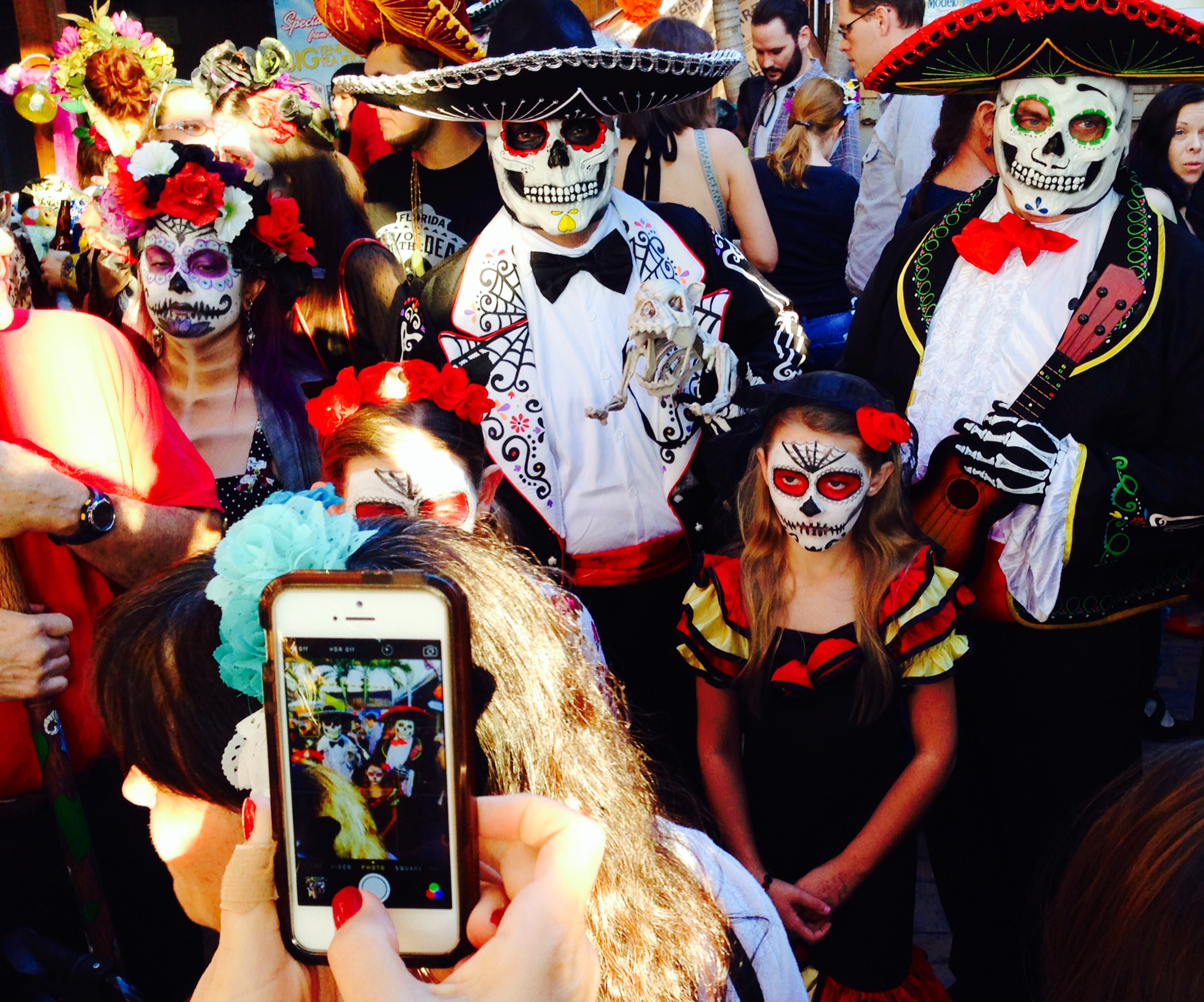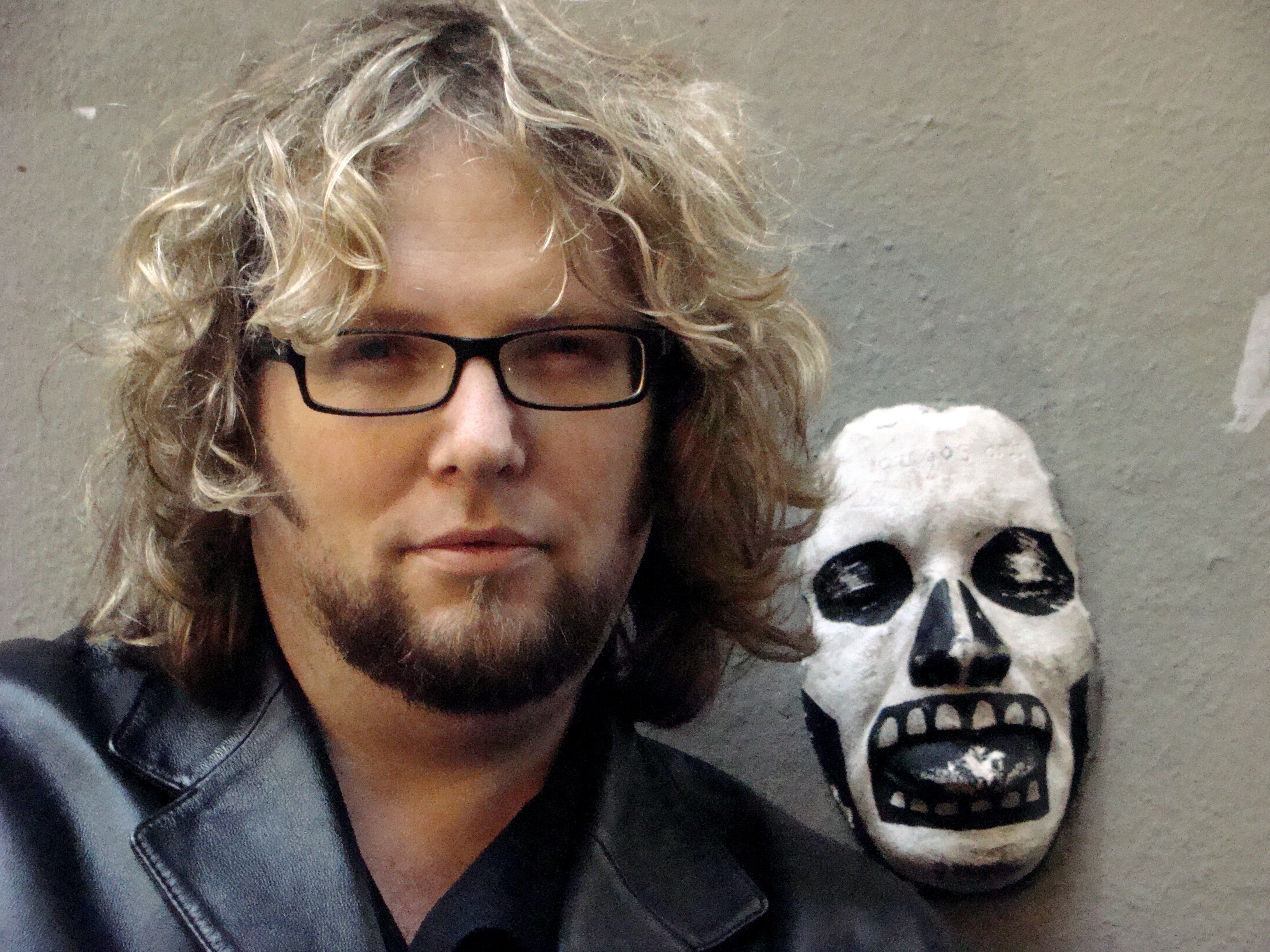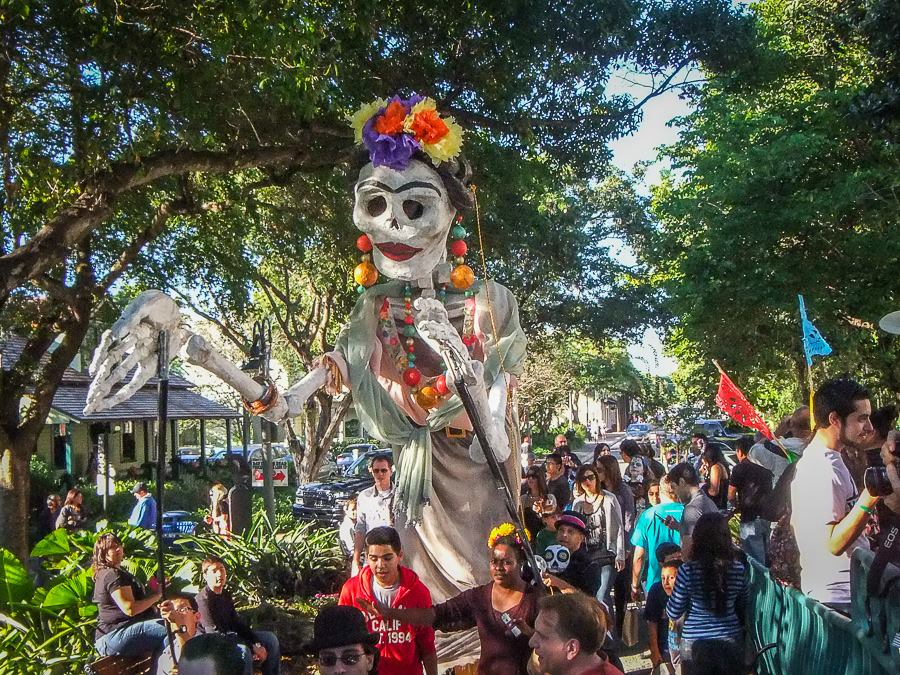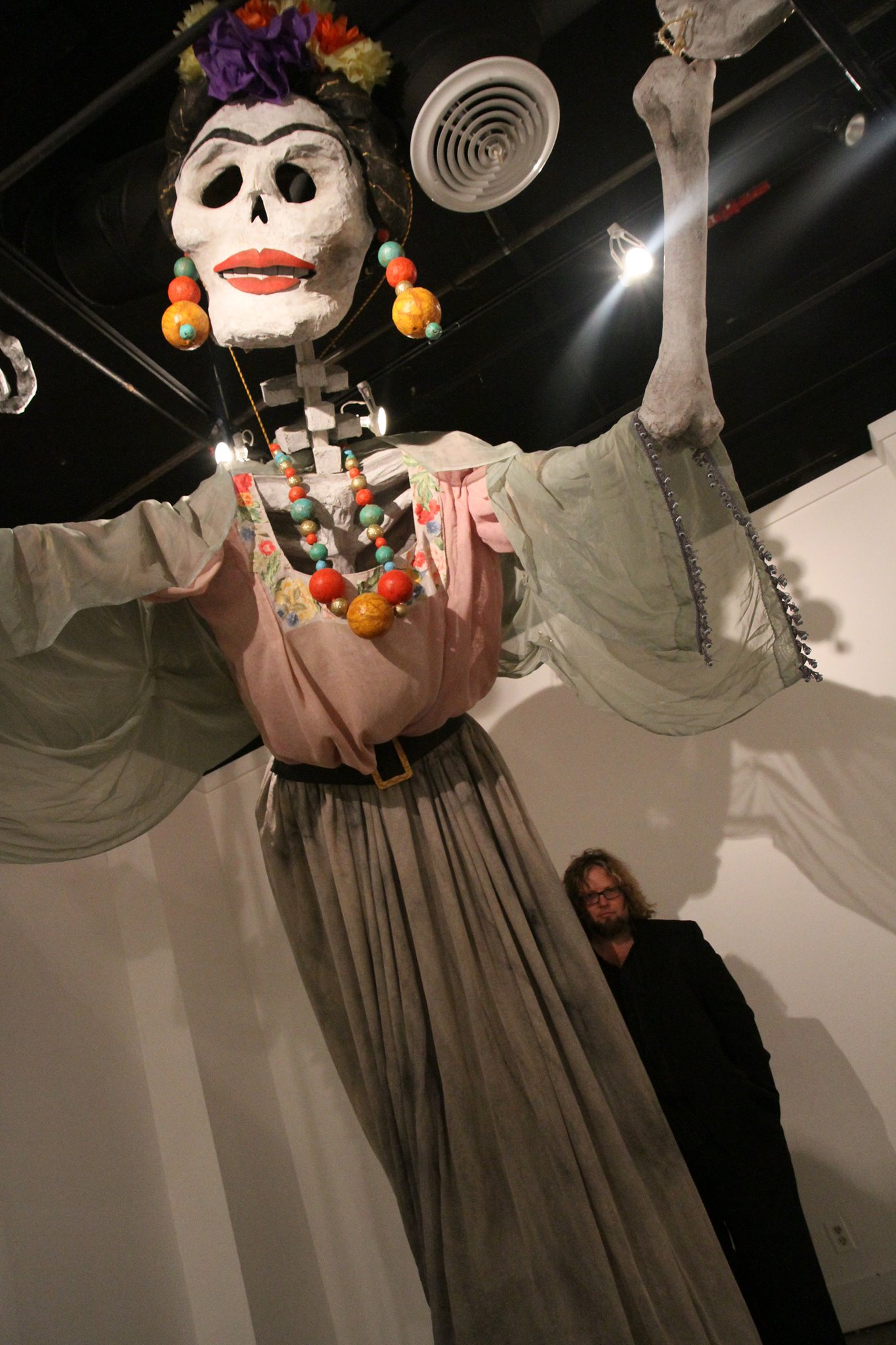
Puppeteer lures skeletons out of the closet for Florida Day of the Dead
Photo: Florida Day of the Dead celebrates those who are no longer with us. All photos courtesy of Florida Day of the Dead.
Most people likely have forgotten–or never knew–the origins of Halloween, the second most profitable holiday in the United States. Today, it’s about trick-or-treating, pumpkins, haunted houses, costuming, and tons of parades and drunken parties. But it started out as All Hallows’ Eve, kicking off a three-day event going back to the beginnings of Christianity (and likely even earlier) that was meant to honor those who have died.
South Florida-based puppeteer Jim Hammond has always understood both sides of this holiday, including the way it is famously celebrated in Mexico, where a celebration known as Dia de las Muertos, or Day of the Dead, takes place across all three days. (There, too, the origins pre-date Catholicism to older Aztec rituals that were then combined after the Spanish conquest.)

Jim Hammond started the Florida Day of the Dead festival six years ago.
Six years ago, Hammond decided to mesh his passion for puppetry, pageantry and respect for a tradition that memorializes those we have loved and lost with the inaugural Florida Day of the Dead Celebration in Fort Lauderdale. It will take place again this year on Nov. 2, bigger than ever thanks in part to a Knight Art Challenge grant.
There will be the Skeleton Processional, where participants from the public can get decked out in their best skull-and-bones costumes, to be joined by 40 of Hammond’s giant skeletal puppets and a mariachi band; a craft plaza where the wee ones can learn the art of mask- and puppet-making; a Craft Crypt with contemporary art; and an ofrendas exhibition, where the community is encouraged to build their own altars (ofrendas) to people they have lost. These might incorporate pictures of the deceased, favorite foods, trinkets or the popular “sugar skulls.”

Hammond has created 40 giant puppets for this year’s processional.
That inclusion of the ofrendas is one reason that makes this festival unique here in Florida, tying it closer to ancient traditions, and giving it a special place in Hammond’s heart.
“My first job was as an altar boy,” says the New York transplant. “I worked at funerals, and on All Saints’ Day [the day after Halloween in the Catholic trilogy that ends with All Souls’ Day],” where church attendants would often give offerings. But his connection to the Day of the Dead festival would resonate further after his father passed away when Hammond was only 13. In a sense, creating this festival was “a way of finally saying goodbye,” he says.
But the now 45-year-old artist, whose energy and enthusiasm is infectious, stresses that the Day of the Dead, like it is practiced in Mexico, is not about morbid mourning; it’s about embracing those who came before and having fun with what we have now. “We will all experience death,” he says, “so let’s celebrate life.”

Participants’ artistic costuming is part of the festival fun.
Hammond says he was always attracted to the visual and social possibilities of puppetry. He liked how puppets are linked to history, storytelling and entertainment, in both design and in performance, and how they allow for such broad artistic expression. Puppet theater, for example, arose thousands of years ago to tell the epic tales of Hindu mythology, and a form of that shadow puppetry, wayang, is still hugely popular in Southeast Asia. The medieval “Punch and Judy,” first performed in the street booths of England, is still performed today. And, well, we all know Howdy Doody and Burt and Ernie.
Hammond eventually would get a master’s degree in puppet art design and, in the well-worn tradition of puppetry, take his show on the road. He worked nomadically for companies and troupes, including as puppet master for the Broadway hit “The Lion King,” until he and his wife wound up in Broward County, where he founded The Puppet Network in 2008. The firm does fabrication and production work for companies, ad agencies and festivals.
In 2010, Hammond wanted to take puppet theater back to the streets, in an event that would be multi-disciplinary with musicians, graphic designers, artists and a dollop of Mexican culture in the mix. But Fort Lauderdale is not exactly a Mexican demographic center, and most people initially associated it with a typical Halloween parade–Hammond estimates 750 people attended that first year. Last year, he says, attendance surpassed 11,000.

Puppets can embrace both life and death.
He hopes that the growing popularity of this Day of the Dead celebration is because it is much more than a parade; it’s community-boosting, family-friendly revelry with a mission to promote artistic experimentation. Sure, the spectacle of the procession participants in their extravagant (and sometimes, indeed, macabre) garb with puppets as companions is a crucial element, as is the celebratory atmosphere. But Hammond thinks that its grounding in Latin traditions combined with modern interpretations, and roots in the history as a memorial ceremony, set it apart. He has labeled this year’s event “Memory for the Dead/Party for the Living.”
The Florida Day of the Dead celebration takes place throughout downtown Fort Lauderdale on Monday, Nov. 2, from 4-10 p.m. All events are free to the public.
Recent Content
-
Artsarticle ·
-
Artsarticle ·
-
Artsarticle ·

